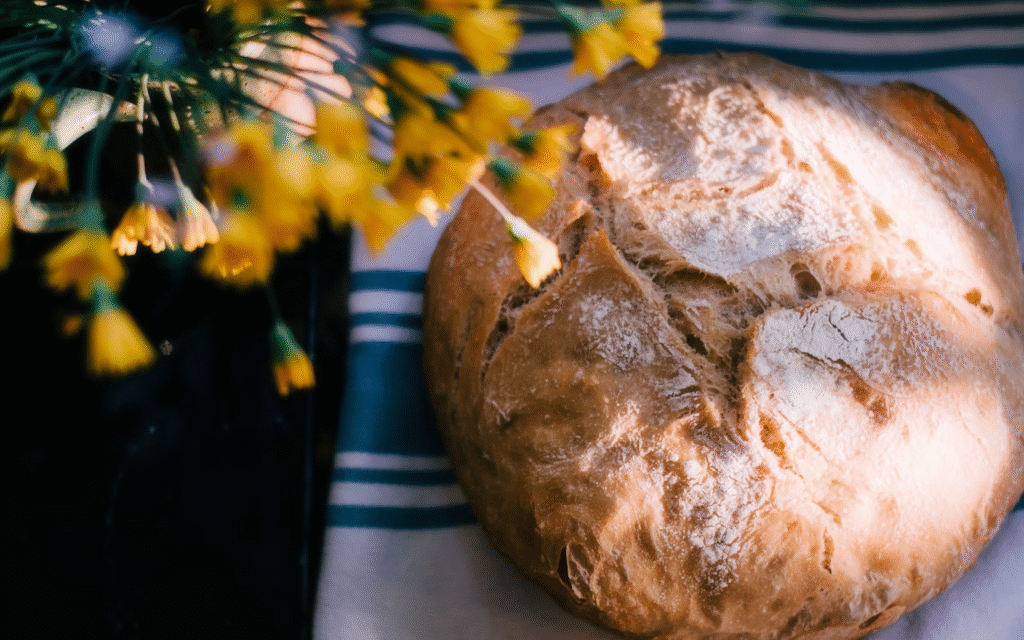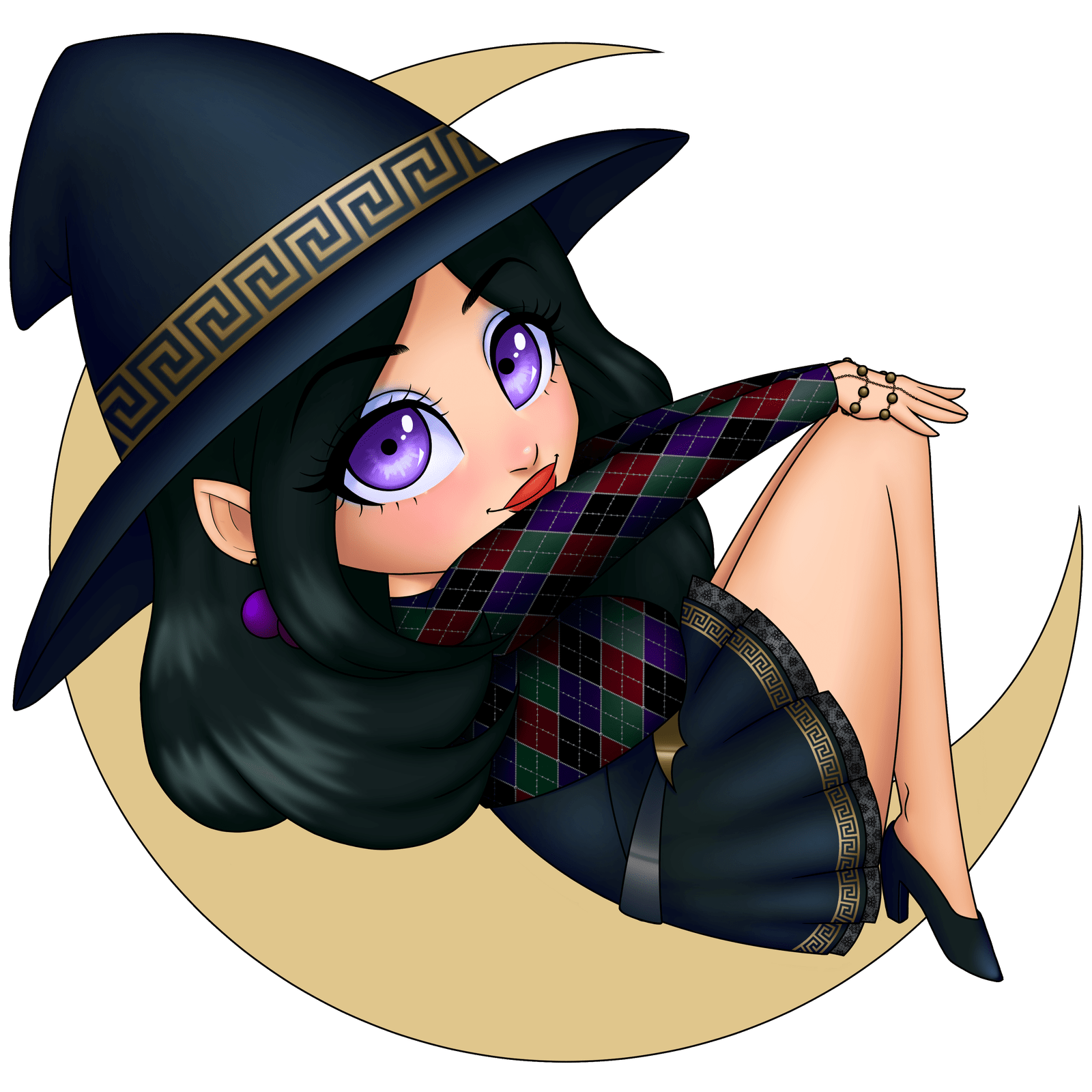Your cart is currently empty!
The Witchy Housewife
Metaphysical Shop & Library
A Khthonic Wiccan Guide to Lammas

To those living in the Northern Hemisphere, I bid Lammas’s blessings to all who celebrate! We are now entering the final dog days of summer. This is a time for gratitude, centering, and preparation for the season of harvest. Today, I share with you not only the history of this sabbat, but how I observe and celebrate it on my own path as a Khthonic Wiccan (which you can read about here).
History & Folklore
Coming from Old English ‘hlāfmæsse‘ (loaf-mass), Lammas (pronounced ‘lahm-uhs’) is one of the eight sabbats of the Wiccan Wheel of the Year which is inspired by the cultural fusion of the Celtic Lughnasadh and the Anglo-Saxon Lammas. As such, it may also be referred to as Lughnasadh. As it occurs during midsummer – the halfway point between the summer solstice and the autumn equinox – it is considered a Lesser Sabbat, though this does not imply that it is any less important than the four Greater Sabbats.
Long ago, in Ireland, there was Lughnasadh, a series of fairs, celebrations, and competitions dedicated to the Celtic god (and King of the Tuatha Dé Danann), Lugh, of kingship, heroism, human skill, and justice. Traditionally, these festivities are thought to have often occurred on hilltops, where the first fruit of the grain harvest would be buried in offering to Lugh and a dramatized retelling of Lugh’s triumph over blight and famine would be performed. What followed were three days of feasts on bilberries, sacrificial bull meat, and the predominate crop of the harvest for the year.
This was sometimes referred to as Lugh’s ‘banais ríghe’, or the legitimization of his kingship through marriage to a woman of royalty, though no specific mention of whom this woman would be can be found. More commonly, however, it was referred to as a funerary rite held in honor of Lugh’s stepmother, Tailtiu. It was said that Tailtiu died of exhaustion while clearing the fields of Ireland in preparation for agriculture, and thus Lugh started the Áenach Tailteann (Tailteann Fair) in her honor near her alleged gravesite, which drew people from both Ireland and Scotland to observe and participate in its abundant competitions of skill and athleticism. This festival was later revived at the Teltown Games, where trial marriages (called Teltown Marriages) were held for a year and a day, when the union could be dissolved or the couple could be handfasted.
In the late fifth century, Germanic tribes from south of Denmark migrated into England, which resulted in the formation of a new Anglo-Saxon culture. Around the same time of year that the Celts were celebrating Lughnasadh, the Anglo-Saxons had their own celebration known as Hlāfmæsse, a celebration of the first fruits of their own area’s wheat harvest. With the advent of Christianity, Hlāfmæsse became the Feast of First Fruits, and the first bread baked at this time was brought to the church to be blessed and consecrated, marked with a cross, and broken into fourths to distribute at the four corners of the barn as a ritual for continued agricultural blessings and protection. As Christianity spread further, the festivals and traditions of Lughnasadh and Hlāfmæsse melded into one, sometimes referred to overall as Lammastide.
This new celebration was dedicated to Saint Peter who, so the story goes, was imprisoned by King Herod of Judea for his beliefs. During his time in prison, it was said that an angel appeared to him, broke his chains, and open the prison gates so that he could safely escape prosecution. What remained of those chains later came to be in possession of two individuals: Pope Leo I and Empress Licinia Eudoxia. When the Empress presented her remains to the Pope for comparison to those he possessed, legend says the chains miraculously fused together. Those chains can still be seen on display in Rome today.
Despite this Christian influence, many of the original agricultural themes of these fairs persisted throughout the region, with one such fair in Wiltshire becoming one of the biggest cattle markets around. Feasts, performances, rituals, contests, and markets maintained their agricultural spirits. In the Scottish Highlands, bound rowan crosses were placed on doors, tar was painted and ribbons were tied onto livestock, and special cakes called ‘bonnach lunastain’ were made and broken off in fields all in the name of agricultural protection. In Edinburgh, folks would construct flags and towers made of sod and stones to display on Lammas morning. In Orkney, fishermen would toast and pray for an abundance of fish. Rituals offering communal ale to the Seonaidh, the Riding of the Marches, and the transformation of private pastures into public ones known as ‘Lammas lands’ are just a few of the more notable events held during Lammas in Scotland.
This idea of celebrate the early days of harvest is not unique to Europe, however. Over in the Americas, the Hopi tribe would celebrate the time around August with ritual dances promoting fertility, optimal weather, and a bountiful harvest. Women would carry full stalks of corn following a leader who carried a ‘paho’ – a stick inscribed with prayers for the germination god, Muingwa. Other tribes of the southeastern region of North America celebrated the first fruits of the corn harvest with the multi-day Green Corn Ceremony – a ceremony that is still held to this day. Over in Nigeria, the crop of harvest for this time of year was the yam, thus the Igbo people celebrate the Iwa Ji (New Yam Festival). Moving once more into Russia, the celebration at this time of year is threefold, with each of the three days going to various saviors: The Honey Savior, the Apple Savior, and the Nut Savior, which, though heavily married to Russian Orthodoxy today, is thought to have traditions which grew from pre-Christian practices.
Many of these traditions are still kept alive today all over the world by all matters of folk. Ireland still holds the festivals such as the Tullamore Show, the Craggaunowen Lughnasa Festival, and the Timoleague Festival. Similar festivals are also still prominent in other areas of Europe as well as North America. As our emotions and desires become inflamed the “dog days of summer” – so named for Seirios, the Dog-Star – we should take extra care to act in good conscious, to remind ourselves of the abundance around us, and to be grateful for all that we have gained over the year.
In Khthonic Wicca
In Persephone’s cyclical seasonal journey, Persephone and Demeter enjoy their final moments together before Persephone must prepare for her trip back down into the Underworld. As the rule of Hemera begins waning to make room for the rule of Nyx, Helios and Seirios burn bright and hot, and we may find ourselves easily riled up before we reach those restful energies of autumn.
In domain, Hermes may be honored as a parallel to Lugh, with Apollon, Helios, Hemera, and Aither honored beside him as deities of Sol, day, and light. There is much the light of day gives us that we take for granted, and the light of day asks for nothing in return. As justice and victory are also a prominent feature of celebrations at this time, it would also be appropriate to honor Zeus, Themis, Dike, and Nike. I personally also include Hekate in every justice working I conduct. As with every Khthonic Wiccan observance of the sabbat, we also take time at Lammas to offer prayer to the Sacred Triad, to the Olympioi, and to the Protogenoi in accordance with seasonal shifts in energies.
As acts of service around this time of year, you may choose to boost community by assisting with fairs and events, by sharing food with those in need, by aiding elderly and disabled individuals with late summer yard work, or by offering friendship to isolated communities.
Sabbat Correspondences
As mentioned in the previous section, the best possible parallel for Lugh on this particular path would be Hermes.
In Wicca, the Mother Goddess has given all her strength to nurture life, and the Warrior God’s power has just begun to decline from the burst of energy of summer. It is a reminder that the sacred act of creation does not come without the sacrifice of time and energy, and we should be grateful for all that we have in our lives now and in the coming harvest season after a year of our own sacrifices.
Plants: Sunflower, Wheat, Corn, Blackberry, Apple
Minerals: Citrine, Topaz, Peridot, Jade, Brass
Colors: Yellow, Gold, Green, Brown, Purple
Animals: Hawk, Eagle, Stag, Squirrel, Pegasos
Symbols: Rowan Cross, Cornucopia, Fruits, Grain Sheaves, Feathers
Tarot: Wheel of Fortune, Justice, Strength
Lammas Ritual Ideas
You may notice a lot of parallels between this sabbat and Thanksgiving celebrations in the United States. During Lammas dinner, it’s a good idea to set aside some offerings of your Lammas dinner for your patron deities, make places for them at the dinner table, and express gratitude for their blessings and presence over the year prior. Be sure to dispose of them in an appropriate way for the flora and fauna in your area. I would also recommend giving some additional thanks to Persephone for the beauty, vibrance, and abundance she brought to the surface over the warmer seasons.
It’s also a great idea to take some time to show gratitude for the loved ones in your life. If you have the time and energy, it would be a wonderful idea to do a few workings to improve that life. These works can be specific to their needs or can simply be for happiness, success, luck, and good health.
Something a bit more fun may be to honor the traditions of athletic competition during this time of year by praying for your local sports teams or perhaps sports teams in other areas you’re connected to culturally.
If you don’t already have one, I would recommend getting a generous chunk of quartz to turn into a personal working stone that you keep near your altar or your workings to amplify the energy there. Lammas would be a fantastic time to charge or recharge this stone, holding it while you think over and express gratitude for the things you’ve earned and received this year. You may also like to take some time to think on things you’d like to manifest as if they’d already happened, expressing gratitude in the same way.
Finally, as we are about to move into the season of harvest, it’s a good idea to take some time to meditate on the things that may need to be eliminated or reworked in the coming year. Identifying these things now will give you an earlier start on brainstorming to make way for adequate reflection and cultivation in the coming autumn and winter months. You may also like to call on deities or guides for guidance.
Lammas Spread Ideas
A Lammas charcuterie spread of cheese, berries, nuts, and preserves can really help to boost that feeling of abundance and indulgence. Anything that keeps well dry and doesn’t get finished from your spread could also be turned into a hearty, delicious trail mix for nibbling on during those hot summer afternoons.
A fresh baked bread of choice is a must, in my opinion, for Lammas, which goes great with any type of savory, dippable meat and potato stew. Throw in some creamed corn on the side and some sort of apple dish (pie, cake, muffins, etc.) for dessert, and you’ve got a dinner filled with energies of abundance.
I would also recommend getting some wine made from seasonal fruits or berries – like blackberry wine, for example – and infusing it with energies of gratitude for serving with your meal. If you would prefer not to have alcohol, you can instead opt for juice or tea.
For Your Reference
The Digital Grimoire provides a plethora of free resources on witchcraft, Khthonic Wicca, and more. As of today, a quick reference for Lammas has been added to the Sabbats subsection, available here on my website any time you should need it. Until my next article, have a very blessed Lammas!
Want to learn more about the Path of Khthonic Wicca? Subscribe to The Witchy Housewife below to receive updates and stay tuned whenever I release a new article. No spam – just updates! )O(

Appreciate the work that I do?
Feel free to leave a tip if you are able.
I am grateful that you are here. 💚

Leave a Reply